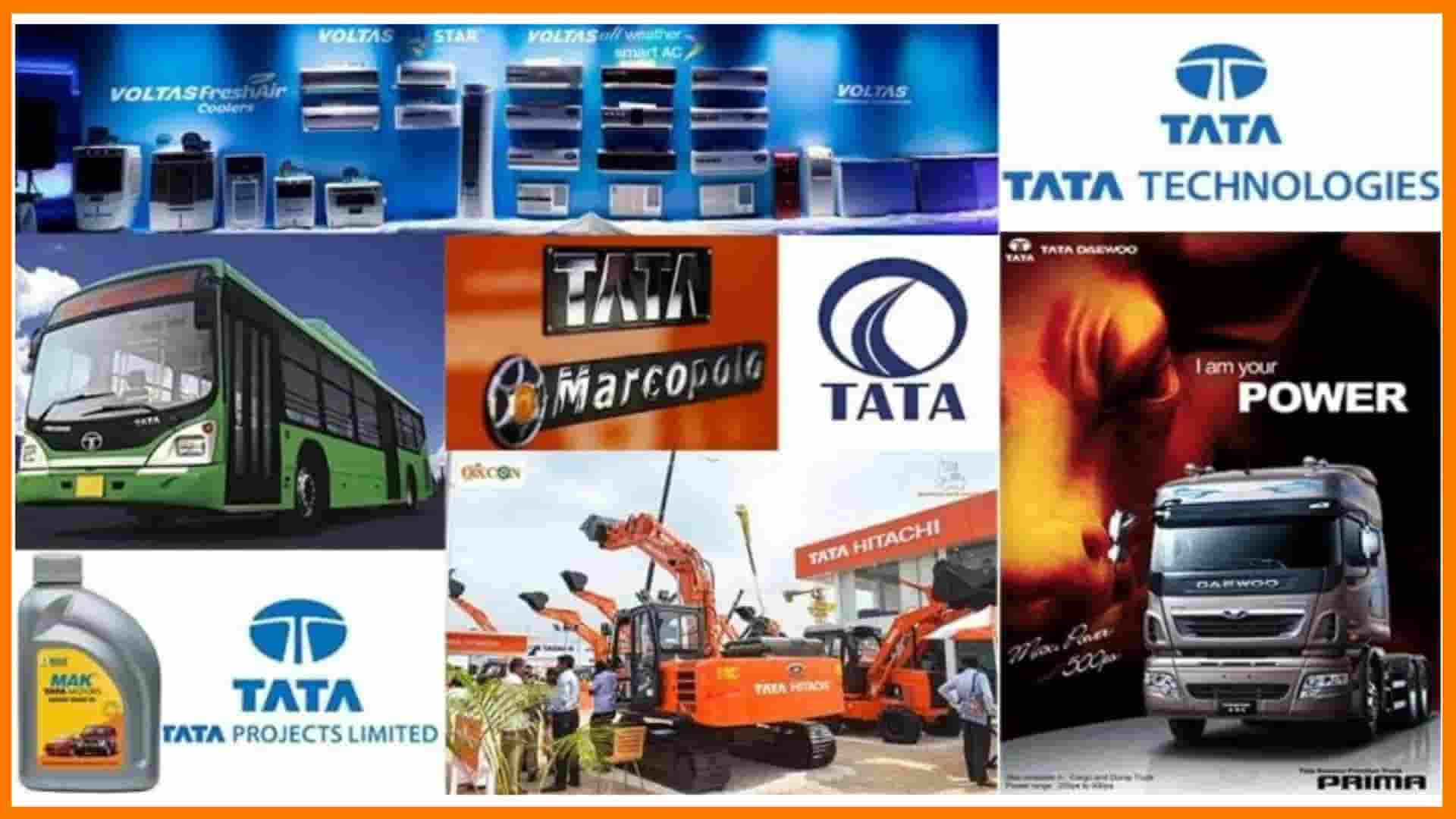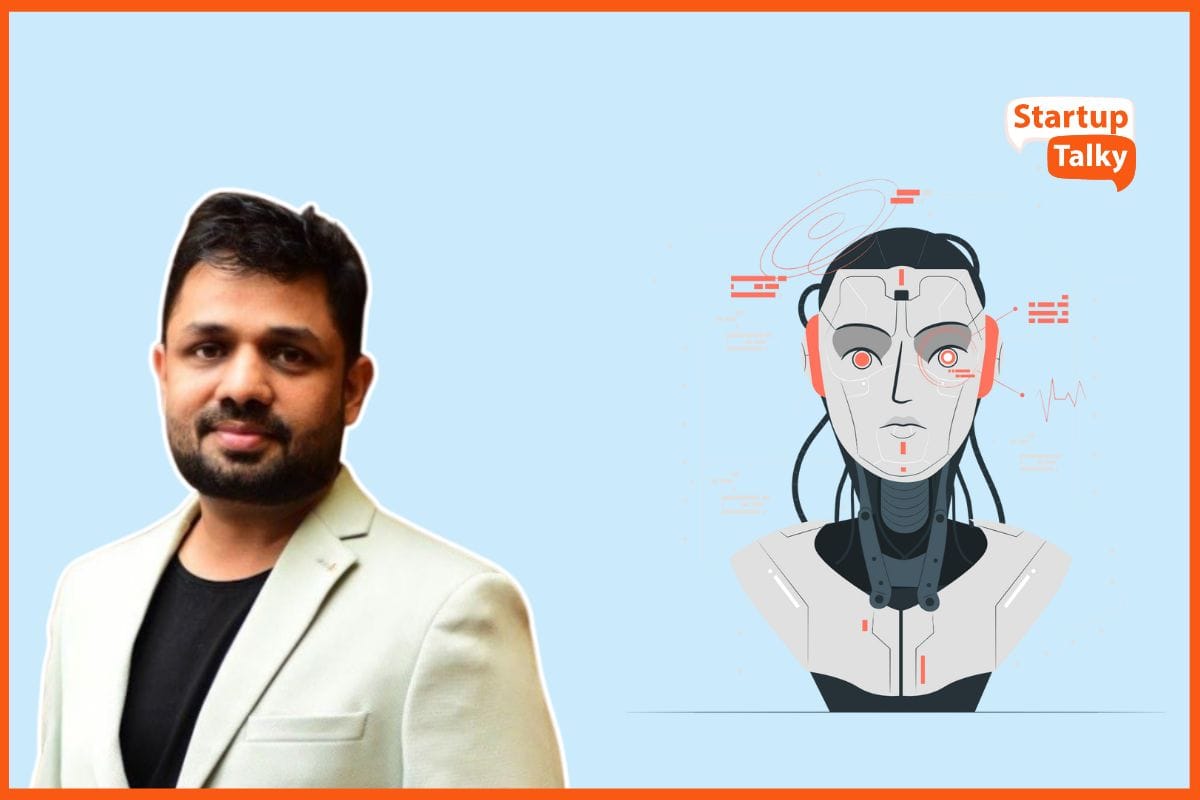Tata Case Study | Success Story Of The Tata Group
📖 Learning
Tata Group is an Indian global aggregate holding organization headquartered in Mumbai, India. Established in 1868 by Jamsetji Tata, the organization increased worldwide acknowledgment in the wake of acquiring a few global companies. Perhaps the biggest aggregate, Tata Group is claimed by Tata Sons.
Each Tata organization works autonomously under the direction and supervision of its directorate and investors. Noteworthy Tata's organizations and backups incorporate Indian Hotels Company, Tata Chemicals, Jaguar Land Rover, Tata Communications, Tata Consultancy Services, Tata Motors, Tata Power, Tata Steel, Voltas, and much more.
Case study of Tata Group, an Indian global aggregate holding organization headquartered in Mumbai, established in 1868 by Jamsetji Tata. Read more about it in detail in this article.
History and Origin of Tata Group
List of the Tata Group’s Chairmen from 1868 to Present
TATA Business Excellence Model (TBEM)
Marketing Strategy of Tata Group
History and Origin of Tata Group

In 1870 with INR 21,000 capital, Jamsetji Tata founded an exchange organization. He purchased a bankrupt oil plant at Chinchpokli and transformed it into a cotton plant under the name Alexandra Mill which he sold for a profit after 2 years. In 1874, he set up another cotton factory at Nagpur named Empress Mill.
His aim was to accomplish 4 main objectives: setting up an iron & steel organization, an exceptional inn, a world-class learning establishment, and a hydroelectric plant. During his lifetime, the Taj Mahal Hotel at Colaba waterfront was opened in 1903, making it the first in power in quite a while.
After Jamsetji's passing, Dorabji Tata, his son, became the Chairman in 1904. Sir Dorabji built up the Tata Iron and Steel organization (TISCO), presently known as Tata Steel, in 1907. Denoting the gathering's worldwide aspirations, Tata Limited opened its first overseas office in London. Soon as per Jamsetiji's wish, Western India's first hydro plant was set up and the Indian Institute of Science was also set up in 1911.
JRD Tata was crowned Chairman of Tata Group in 1938. Under his chairmanship, the benefits of the Tata Group developed from $100 million to over $5 billion. When he took over TATA, it had 14 undertakings, but in 1988 Tata Sons had developed into a combination of 95 endeavors. These endeavors comprised adventures that the organization had either begun or held controlling interests in.
In 1952, JRD established an airline, known as Tata Air Services (later renamed Tata Airlines). In 1953, the Government of India passed the Air Corporations Act and acquired a larger part stake in the transporter from Tata Sons; however, JRD Tata would continue as Chairman till 1977.
In 1945, Tata Motors was established and was first centered around trains. In 1954, it entered the business vehicle showcase in the wake of shaping a joint endeavor with Daimler-Benz. In 1968, Tata Consultancy Services was established.
In 1991, Ratan Tata was crowned Chairman of Tata Group. This was additionally the time of financial advancement in India, opening up the market to remote contenders. During this time, Tata Group started to obtain various organizations like Tetley (2000), Corus Group (2007), and Jaguar & Land Rover (2008). In 2017, Natarajan Chandrasekaran was named administrator.

List of the Tata Group’s Chairmen from 1868 to Present
The Tata Group is considered India's number one conglomerate multinational company with its headquarters situated in Mumbai. The company is known to be in business for more than 150 years of service and its products are widely spread across multiple fields.
The company is known to provide services in more than 150 countries and covers about six continents. Since the time of its service, there have been several chairmen noted to work for Tata Group. The list of Tata Group's Chairman is given below:
Jamsetji Tata 1868 - 1904

Born on 3 March 1839, Jamsetji Tata was an Indian Pioneer and the founder of today India's biggest group of companies called Tata Group. He was the first Chairman of the firm and remained in the same post till 1904.
Sir Jamsetji Tata is honored with many titles and awards. He was given the honorary tag of "Father of Indian Industry". He was also ranked first in the list of "Hurun Philanthropists of the Century (2021)". Sir Jamsetji Tata left the world on 19 May 1904, at the age of 65.
Sir Dorabji Tata 1904 - 1932

Born on 27 August 1859, Sir Dorabji Tata was the eldest son of Sir Jamsedji Tata and the second chairman of the Tata Group. He died in 1932 giving rise to the third chairman of the Tata Group.
Sir Dorabji Tata played an essential role in forming and maintaining the Tata group of industries during the British era. The prime focus of Sir Dorabji Tata was to fulfill the dream left by Sir Jamsedji Tata and establish the modern iron and steel industry.
Sir Dorabji Tata was the first president of the Indian Olympic Association. He was also acknowledged by the Britishers. In 1910, Dorabji Tata was knighted by Edward Vll to be referred to as Sir Dorabji Tata.
Sir Nowroji Saklatwala 1932 - 1938

Born on 10 September 1875, Sir Nowroji Saklatwala was the third chairman of the Indian multinational conglomerate Tata Group. Unlike the previous two chairmen, he was just a mere employee and an apprentice of the Tata Group.
He made his way up from an employee to Chairman and remained in the same post till his sudden death due to heart failure in 1938. Sir Nowroji Saklatwala introduced many schemes and facilities for the employees and always worked well for the welfare of the employees.
JRD Tata 1938 - 1991

Born on 29th July 1904, Jehangir Ratanji Dadabhoy Tata was the fourth chairman of the Tata Group. He was the second child of Ratanji Dadabhoy Tata, the cousin of Jamsedji Tata. JRD is the only chairman of Tata Group who has served for more than 50 years. JRD Tata was also the first Indian to be granted a commercial pilot license.
And owing to his interest in the aviation industry, JRD Tata established Tata Aviation Services. He made many contributions to the company and was also acknowledged for his efforts. JD Tata is also the owner of the Padma Vibhushan and the Bharat Ratna awards. After two years of resigning as the chairman of Tata Group, Sir JRD Tata died on 29 November 1993.
Ratan Tata 1991 - 2012, 2016 - 17

Born on 28 December 1937, Ratan Naval Tata was the fifth chairman of the Tata Group. Ratan Tata was the son of a Naval Tata. Naval Tata was the adopted son of the sir Jamsedji Tata. Ratan Tata started as an assistant in the Tata Group and made his way up to the fifth chairman of the company.
Ratan Tata was appointed as the chairman of the company in 1990 and remained in the same post till 2012. He was again known to serve the Tata Group as an interim chairman for the period between October 2016 and February 2017.
Ratan Tata had contributed to shaping the firm from the time he was appointed as the chairman, the Tata Group was in a chaotic form. Under the guidance of Sir Ratan Tata, the company flourished again. Ratan Tata is also the holder of many awards like the Padma Bhushan (2000) and Padma Vibhushan(2008).
Ratan Tata passed away on October 9, 2024, at the age of 86. He had been admitted to the Hospital due to age-related health issues and to manage his blood pressure.

Cyrus Mistry 2012 - 2016

Born on 4 July 1968, Cyrus Pallonji Mistry was the sixth chairman of the Tata Group and also the second chairman in consideration to not bear the tag of "Tata" in their surname. Cyrus Mistry joined the Tata Group as a board member and was soon elected as the chairman of Tata Group in 2012.
However, just after four years of chairmanship, he was removed from the position of chairman by the board of members. The prime reason behind his removal has many debates on the topic. It is stated that Cyrus Mistry did not acknowledge the history of the Tata Group and was keen on developing the firm in his way.
There were also reports stating that Cyrus Mistry filed a case against Tata's heads for oppressing the interest of small stakeholders. The issue between Cyrus Mistry and Ratan Tata was taken to the legal procedures where on 26th March 2021, the Supreme Court of India ruled out the decision in favor of Ratan Tata and dismissed the rumors of Cyrus Mistry being reinstated as the group chairman.
Irrespective of the ups and downs faced by Cyrus Mistry, he was categorized as the most important industrialist in both India and Britain in the year 2013 in an article published by the Economist. Unfortunately, on 04 September 2022, Cyrus Mistry died in a road accident in Maharashtra.
Natarajan Chandrasekaran 2017- Present

Born on 2 June 1963, Natarajan Chandrasekaran is the seventh and the current chairman of the Tata Group. He is the only chairman in the history of the Tata Group who is a non-Parsi and professional executive. He was previously working as the chief operating officer and chief executing officer of the Tata consultancy services.
The journey of Natarajan Chandrasekaran as the chairman of the Tata Group is not a smooth one. In the year, 2019, the National Company Law Appellate Tribunal (NCLAT) held his position as chairmanship illegal and gave the order to restore Cyrus Mistry as the Executive Chairman. Yet again in 2020, the Supreme Court of India overruled the decision of NCLAT. Natarajan Chandrasekaran is still known to work as the Chairman of the Tata Group.

TATA Business Excellence Model (TBEM)
The Tata Business Excellence Model (TBEM) is an altered adaptation of the internationally famous Malcolm Baldrige Model. TBEM is utilized by the Tata business group to remain in step with the regularly changing business conditions.
TBEM focuses on seven central activities: administration, key arranging, client and market center, estimation, examination and learning of the executives, human asset center, processing of the board, and the business results. Execution is estimated in outright focuses, and organizations need to accomplish at least 500 (out of 1,000) within four years of consenting to the BEBP arrangement.
Accomplishments are granted by acknowledgment over the group. TQMS helps Tata's business organizations utilize the model to pick up bits of knowledge on their business qualities and open doors for development. This is overseen through a yearly procedure of appraisal and affirmation.
TBEM Criteria Purpose
Tata Business Excellence Model (TBEM) is the reason for leading authoritative evaluations and for offering input to candidates. Moreover, the TBEM criteria have three significant jobs in reinforcing aggressiveness:
- To help improve authoritative execution practices, abilities, and results.
- To encourage correspondence and sharing of best practices among associations of various kinds.
- To fill in as a working apparatus for comprehension, overseeing execution, and directing hierarchical arranging and open doors for learning.
- TBEM-based performance excellence goals.
- TBEM Criteria are intended to enable associations to utilize a coordinated way to deal with hierarchical execution.
- Conveyance of regularly improving an incentive to clients and partners; adds to hierarchical maintainability.
- Improvement of by and large authoritative viability and capacities.
- Hierarchical and individual learning.
- The Role of core values and concepts.
Leadership
The administration tends to observe how your senior heads manage and support your association and set an authoritative vision, qualities, and execution desires. Consideration is given to how your senior chiefs speak with your workforce, create future pioneers, measure hierarchical execution, and make a domain that energizes moral conduct and elite.
The category additionally incorporates your association's administration framework and how it guarantees moral conduct and practices great citizenship.
Strategic Planning
Vital planning leads to activity arranging, sending of plans, how satisfactory assets are guaranteed to achieve the plans, how plans are changed if conditions require a change, and how achievements are estimated and supported.
The strategic planning category focuses on long-haul authoritative support. While numerous associations are progressively capable of vital arranging, plan execution is a noteworthy test.
This is particularly obvious given market requests to be spry and to be set up for sudden change, for example, troublesome innovations that can disturb a generally quick-paced yet increasingly unsurprising commercial center. This category features the need to put an emphasis on building up your arrangements as well as on your capacity to execute them.
Customer And Market Focus
Client and market focus caters to how your association tries to comprehend the voice of the client and of the commercial center with attention to fulfilling clients' necessities, needs, and desires, enchanting clients, and building steadfastness. The category stresses connections as a significant piece of a general tuning, learning, and execution greatness technique.
Your consumer loyalty and disappointment results give indispensable data to understanding your clients and the commercial center. Much of the time, such outcomes and patterns give the most significant data on your clients' perspectives as well as on their commercial center practices (e.g., rehash business and positive referrals), and how these perspectives and practices may add to the manageability of your association in the commercial center.
Measurement, Analysis, And Knowledge Management
The Measurement, analysis, and knowledge management category is the primary concern inside the criteria for key data about successfully estimating, investigating, improving execution, and overseeing authoritative information to drive improvement and hierarchical intensity.
In the least complex terms, category 4 is the "mind focus" for the arrangement of your association's activities with its vital goals. Fundamental to such utilization of information and data is their quality and accessibility.
Workforce Focus
Workforce focus caters to key workforce rehearses coordinated towards making and keeping up an elite working environment and towards drawing in the workforce to empower it. It also deals with the way in which the association adjusts to change and succeeds.
The category covers workforce commitment, improvement, and the board in a coordinated way (i.e., lined up with your association's vital targets and activity plans). To fortify the essential arrangement of the workforce, this criteria additionally covers human asset arranging as a major aspect of the strategic planning category.

Process Management
Procedure Management is the point of convergence inside the Criteria for your key work frameworks and works forms. Incorporated with the category are the focal necessities for recognizable proof and your abilities to accomplish productive and powerful work process administration, successful structure, a counteractive action direction, linkage to clients, providers, accomplices, and colleagues, and an emphasis on esteem creation for every single key partner, operational execution, process duration, crisis availability, assessment, ceaseless improvement, and authoritative learning. Dexterity, cost decrease, and process duration decrease are progressively significant in all parts of the procedure.
In straightforward terms, "deftness" alludes to your capacity to adjust rapidly, deftly, and successfully to evolving prerequisites. Contingent upon the idea of your association's methodology and markets, readiness may mean quick change starting with one item and then onto the next, fast reaction to evolving requests, or the capacity to deliver a wide scope of tweaked administrations.
Readiness likewise progressively includes choices to redistribute, concurrences with key providers, and novel courses of action. Adaptability may request unique procedures, for example, executing particular structures, sharing segments, sharing assembling lines, or giving specific preparation.
Cost and process duration decrease frequently including Lean procedure the board systems. It is essential to use key measures for following all parts of your general procedure.
Business Results
The resulting category gives outcomes that include your target assessment and your clients' assessment of your association's items and administrations, your general money-related and showcase execution, workforce results, initiative framework, social duty results, and the consequences of every single key procedure and procedure improvement exercise.
Through this center, the Criteria's motivations: prevalent estimation of contributions as seen by your clients and the commercial center, unrivaled hierarchical execution as reflected in your operational, workforce, lawful, moral, and monetary pointers, and authoritative and individual learning are kept up.
Classification 7 in this way gives "constant" data (proportions of progress) for assessment and improvement of procedures, items, and administrations in arrangement with your general authoritative technique.

Marketing Strategy of Tata Group
The organization emphasizes the 4Ps (Product, Price, Place, Promotion) which exude Tata Group's advertising methodology.
Product

The item procedure and blend in Tata Group's promoting technique can be clarified as pursues. Tata Group is one of the main aggregates in India. Tata Group has its essence in a few enterprises and has units spread over the world. The Tata gathering is into the following business verticals:
- Communication and ITeS: Tata Communications, Tata Teleservices, Tata Consultancy Services, Tata Elxsi, and Tata Interactive Services.
- Consumer and Retail: Tata Sky, Titan, Landmark, Infiniti Retail, and Casa Decor.
- Defense and Aerospace: Tata Advanced Materials, Tata Industrial Services, Tata Technologies, and Tata Manufacturing Services.
- Realty and Infrastructure: Tata Power, Tata Housing Development Company, Tata Consulting Engineers, Tata Power Solar, and Voltas.
- Financial Services: Tata AIA Life Insurance, Tata AIG General Insurance, Tata Capital, and Tata Investment Corporation.
- Manufacturing: Tata Chemicals, Jaguar Land Rover, Tata Steel, Tata Motors, and Tata Daewoo Commercial Vehicle Company.
- Services: Tata SIA Airlines – Vistara, Tata Services, Tata Technologies, Taj Air, TM International Logistics, and Tata Global Beverages.
This rundown isn't comprehensive. It has more than seventy brands which take into account twenty-eight separate businesses.
Price
All organizations of the Tata gathering capacity function autonomously. Each of these organizations is one of a kind and particular from one another. In this way, the estimating technique in its promoting blend pursued by these individual organizations differs as they are all in various ventures confronting diverse financial variables, capital, scale, and so on.

Place
Tata gathering is available in more than eighty-five nations more than six landmasses. The gathering has developed to a tremendous scale all-inclusive. The greater part of its organizations are forward-thinking and give benefits on cell phones and hold a decent nearness on the web.
Promotion
The free organizations under the Tata brand advance their image (and their own identity) through individual promoting plans. Tata's administrations and customer items are known to utilize big names like Titan, Taj Hotels, and so forth. Print media is additionally utilized widely by organizations like Tata Steel and Tata Motors.
Organizations like that of Guard and Consultancy are more B2B in nature; they don't enjoy mass advancements. Since this is a helpful showcasing of the brand, here are the other three Ps that form the 7Ps advertising blend of Tata Group.
People
The Tata bunch all in all utilizes 6,60,800 representatives. The Tata Group itself is possessed by Tata Sons. The Tata Quality Management Services part is responsible for managing the quality administration branch of more than a hundred autonomous organizations to guarantee primary quality principles as the Tata gathering remains the mainstay of value and trust.
Physical Evidence
The sheer size of the Tata gathering is proof of it being a seething achievement and market pioneer. Tata Gathering's business sector top is 7.2% of the all-out market top of BSE.
Procedure
The Tata gathering strategizes to develop by securing mergers around the world and incrementing its topographical limits. The gathering likewise targets obtaining the wellsprings of crude material.
For setting, the Tata gathering has profound enthusiasm for getting steel plants all over the globe with the goal that it can give steel at any rate to its car organization, subsequently disposing of the issue of the store network and profiting from the economies of owing the wellspring of crude material.
It has in the past procured misfortune by acquiring worldwide mammoths like Tetley tea, Land Rover, and Jaguar. Henceforth, this finishes up the promoting blend of Tata Group aggregate.

Conclusion
In a nutshell, one can say that the “Tata group” is one of the most inspiring idols for new entrepreneurs. Tata Company is one of the pride of India and a shining example of success for younger business climbers.
There are many new examples set by Tata Group in front of the World. The above article contains the company details with its basic information like marketing strategy, business model, list of chairmen, etc.
FAQs
Who is the founder of Tata Group?
Jamsetji Tata is the founder of Tata Group.
Why is Tata Group Successful?
Tata Group abides by its mission and works on ethics. Many competitors of Tata Group are publicly owned firms, whereas Tata is a family business that now has grown into a big multinational conglomerate. Its success lies in its core values and an undefeated business model.
What are the 5 Tata values?
Tata Group is driven by 5 major values. They are integrity, responsibility, excellence, pioneering, and unity.
Which company is the most profitable in the Tata group?
As per the report, Tata Consultancy is the most profitable company in the Tata Group in 2023.
Why is Ratan Tata an inspiration?
Ratan Tata has set many examples for the young generation to look at and learn. The prime reason behind Ratana Tata being an inspiration is that he is a combination of an excellent businessman and a great human being.
What is Tata's first business?
Jamsetji Tata started the business in 1868 as a commerce company and later expanded into other industries.
Must have tools for startups - Recommended by StartupTalky
- Convert Visitors into Leads- SeizeLead
- Website Builder SquareSpace
- Manage your business Smoothly Google Business Suite








